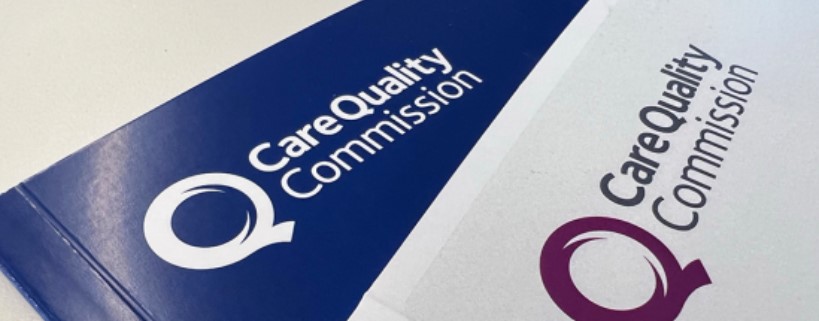By Andy Ford, Unite Health EC member
The new Health Secretary, Wes Streeting, has rightly castigated the Care Quality Commission (CQC) for, amongst many things, “being so badly run patients cannot trust its ratings”, and for creating a situation “where one in five of our health and care providers has not received a rating”. He professes himself “stunned”.
The Chief Executive of the CQC, Ian Trenholm, left the organisation in early July with just seven days notice. According to a leak to the Health Service Journal, his successor, Acting CEO Kate Terrain, wrote to staff at the CQC to say, “The way we work is not working and we are not consistently keeping the people who use services safe…Our people are not able to effectively identify and manage risk and encourage improvement and innovation”, and “Our organisational structure, flow of decision making, roles, internal and external relationships do not promote a productive and credible way of working.” All pretty damning.
But what Streeting is not realising, and is does not want to realise, is that the CQC implosion has exposed the whole market model of healthcare. The New Labour myth, championed by Tony Blair, and Streeting’s advisor, Alan Milburn, former Health Secretary under New Labour, was of a ‘social market economy’ in health – where the private sector ‘competed’ with the NHS and forced NHS services to be ‘lean and efficient’ under the whip of capitalist competition.
Meanwhile, the government set the standards and inspected the services to make sure they were being met. It was all part of Tony Blair’s ‘Third Way’, allegedly neither socialist nor capitalist, but just ‘what works’. It claimed to harness the supposed ‘good bit’s of capitalism, like the profit motive, while “driving innovation”, but was supposed to prevent the ‘bad bits’, like rip-off charges, monopolisation, greed and sweated labour. Of course, it was really just capitalism, but that was the myth.
In 2001 – and cue the CQC.
But you cannot inject quality into a system just by inspection. Japanese car manufacturers gave up on that in the 1960s, right before their cars conquered the world. Firms like Toyota “build quality in” and they “get it right first time”. It’s not easy, but they do it.
The opposite model is ‘Quality Control’ (QC) where the product is first manufactured, and only then does the QC check and weed out the bad ones. The problem is that you could be weeding out 1%, 10% or even 20% of the products, and it still counts it as ‘success’. The quality was not ‘built in’ in the first place
The second modle is the CQC. If they turn up and everything’s fine, then they weren’t needed to be there. But if they turn up and it’s a disaster zone – by then it’s too late, and there’s no point to them being there.
For all their uselessness, CQC hasn’t been cheap. The CQC charge for the inspections – to the tune of £200 million a year – which is taken right out of the budgets of front line services. And the report into the CQC has found that the reports were patchy, took a long time to publish, and were packed full of errors, with no right of appeal worthy of the name. The report found an inspector of nursing homes who had never met a person with dementia. Really?!

Just like Ofted, the CQC try to sum up the performance of a hospital Trust, which might have multiple sites, 30,000 staff, dozens of professional and occupational groups and hundreds of departments and specialties; in two or three words – ‘outstanding’, ‘good’, ‘requires improvement’ or ‘inadequate’. It’s laughable.
In the care home sector, fragmented into 18,000 providers, the CQC simply cannot visit them all on a consistent timetable. As the charity ‘Compassion in Care’ has pointed out, many care homes that do get an inadequate rating simply open up with a new name.
Elderly patients ended up freezing in the street
When the CQC did fail a care home and insist on its closure, at the Merok Park care home in the London Borough of Sutton in 2014, they had no plan or protocol in place to look after the residents. Elderly residents ended up freezing in the street waiting for ambulances, while relatives arrived with bin bags to collect their possessions on just a few hours notice. It was chaos (Sky News, here).
After that fiasco the CQC eventually (two years later) published a guide on how to close a care home. But not a guide on how to run a good one, or how to make the existing ones better.
So, all this inspection and regulation really is not working. The CQC has assessed around half the hospitals in England as ‘substandard’. Of course that does not in any way help the hospitals improve. The market/regulation system is not even ‘what works’.
The ‘social market economy’ has been exposed as a failure, and an expensive one at that. As Merok Park demonstrated, you cannot simply close a hospital or care home, or declare it bankrupt. It is not a restaurant that has failed a hygiene inspection. What happens to the patients? They are not, in fact, ‘customers’ – as this model of healthcare likes to pretend they are.
What the NHS needs is proper management and proper resourcing. The missing part of the jigsaw has always been the democratic oversight and input of communities into their local health services, which was there in the working class forerunners of the NHS. Then good, consistent management and control of services could “build quality in” and help NHS professionals to get the services “right first time”.
The CQC has many problems, but the fundamental problem is the social market model itself. We need democratically-run and managed services, fully publicly-owned and run for social and health needs and not for profits.



